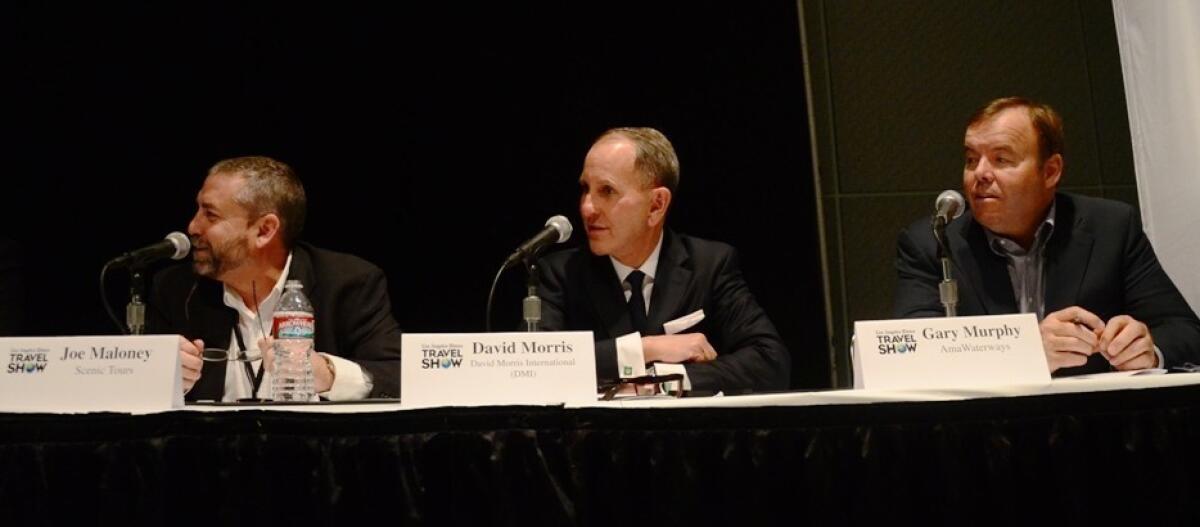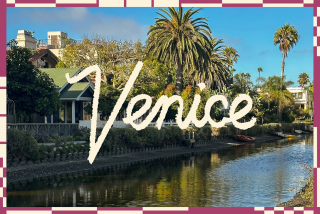L.A. Times Travel Show: In Europe and beyond, river cruises surge

European river-cruising, a rarity among American travelers 20 years ago, continues to grow rapidly on the waterways of the continent, with dozens of vessels on the water, more being built and some companies expanding into Asia and beyond. Along the way, ships have begun adding features like bicycles, kayaks and canoes to lure younger, more vigorous travelers, although seniors still make up a majority of passengers.
As several speakers told travel agents at the Los Angeles Times Travel Show Friday, the key thing for a newcomer to recognize is that a river cruise is vastly different than the ocean cruises that involve ships with 3,000 passengers, multiple pools, casinos, climbing walls and many options for children. Most river cruise vessels carry 120-200 passengers, without a casino, without a floor show. On many lines, all drinks are included in your fare – a rarity on larger, less costly, seagoing ships.
But because of limitations posed by bridges, canals and locks, most river-cruising ships are roughly the same size, no matter the company. And because the shore is always at hand, there’s typically a port call every day, allowing travelers more chance to explore cities and countryside by night and day.
Basically, your port is far more important on a river cruise than it is on a seagoing one.
“The ship, though beautiful, is not the destination,” said Gary Murphy, vice president of sales for AmaWaterways, which has more than a dozen ships in Europe and in 2014 is adding cruises on Myanmar’s Irrawaddy River.
The leading high-end name in the market is Uniworld, which in 2014 is adding a chateaux-and-vineyards itinerary beginning and ending in Bordeaux, France. Besides its many European cruises, the company also operates ships on the Yangtze River in China and the Mekong River, which runs through Cambodia and Vietnam.
Scenic Tours, A-Rosa, Viking River Cruises, Tauck, Avalon River Cruises and Grand Circle are other major players in river cruising. Rates typically range from $200-$600 per person per day, meals included—substantially higher than ocean-going cruises, which benefit from economies of scale and typically charge for more incidental items along the way.
The Danube and Rhine rivers are among the most popular routes; the cruise trade owes much of its growth to the completion of the 105-mile Rhine-Main-Danube Canal in 1992. But plenty of other European rivers can be cruised, including France’s Seine and Dordogne, Germany’s Rhone and Italy’s Po. Seven- and eight-day itineraries are common.
Friday’s panel discussion was designed to update travel agents on changes in the trade. The show opens to consumers on Saturday and Sunday at the West Hall of the Los Angeles Convention Center.
More to Read
Sign up for The Wild
We’ll help you find the best places to hike, bike and run, as well as the perfect silent spots for meditation and yoga.
You may occasionally receive promotional content from the Los Angeles Times.







